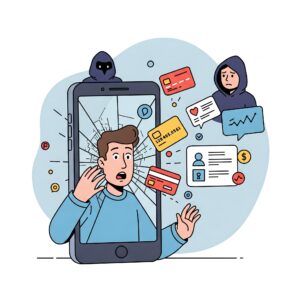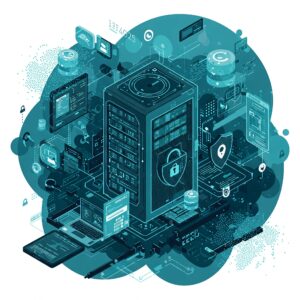Recent Cyber Security Events That May Affect You
It’s hard to avoid hearing about data breaches in the news. In recent months, several major events have highlighted the ongoing threat to personal information. Here’s a summary of some of the most significant incidents and what you can do to protect yourself.

It’s hard to avoid hearing about data breaches in the news. In recent months, several major events have highlighted the ongoing threat to personal information. Here’s a summary of some of the most significant incidents and what you can do to protect yourself.
Recent High-Profile Breaches:
- Pennsylvania State Education Association (PSEA) Breach (March 2025): Over 517,000 members had their personal information stolen, including government IDs, Social Security numbers, medical information, and financial details. This shows how even large organizations can be vulnerable.
- California Cryobank Cyberattack (April 2024, confirmed March 2025): This major sperm bank confirmed a cyberattack in 2024 that compromised customer data. The exact number of affected individuals is still unknown. This underscores that no organization, regardless of size or industry, is immune.
- LoanDepot Ransomware Attack (January 2024): This mortgage lender suffered a ransomware attack exposing the sensitive data of approximately 16.9 million customers, including Social Security numbers, account numbers, and addresses. The company reported $27 million in response and recovery costs.
- Dollar Tree Third-Party Breach (August 2023): A vendor’s data breach impacted approximately 1.98 million Dollar Tree and Family Dollar customers and employees. Their names, birthdates, and Social Security numbers were stolen, highlighting the risks of relying on third-party vendors who may not have sufficient security measures in place.
These are just a few examples. Many other smaller breaches occur regularly, affecting millions of individuals.
What Types of Attacks Are We Seeing?
These incidents demonstrate a variety of attack methods including:
- Ransomware: Attackers encrypt your data and demand a payment for its release.
- Data breaches: Hackers gain unauthorized access to databases containing personal information.
- Phishing: Scammers try to trick you into giving up your personal information via email, text, or phone calls.
- Third-party vulnerabilities: Breaches can occur through weaknesses in the systems of companies you do business with.
How Can You Protect Yourself?
The good news is there are many steps you can take to reduce your risk:
- Strong Passwords: Use unique, strong passwords for every account, using a combination of uppercase and lowercase letters, numbers, and symbols. Consider a password manager to help.
- Multi-factor Authentication (MFA): Enable MFA whenever possible. This adds an extra layer of security, requiring more than just a password to access your accounts.
- Software Updates: Keep your software (operating systems, browsers, anti-virus) updated. Updates often include security patches to protect against known vulnerabilities.
- Suspicious Emails & Links: Be wary of suspicious emails, texts, or phone calls requesting personal information. Don’t click on links or open attachments from unknown senders.
- Secure Wi-Fi: Avoid using public Wi-Fi for sensitive activities like online banking or shopping.
- Data Encryption: Use data encryption when possible to protect sensitive files.
- Regular Security Checks: Regularly review your financial accounts and credit reports for any unauthorized activity.
Don’t Become Apathetic:
While it may seem overwhelming, don’t give in to apathy. Cybersecurity is an ongoing challenge, and by taking proactive steps, you can significantly reduce your risk. Staying informed and taking simple precautions can go a long way in protecting your personal data.
Disclaimer: This blog post is for informational purposes only and is current as of March 21st, 2025. The information provided should not be considered financial or legal advice.





